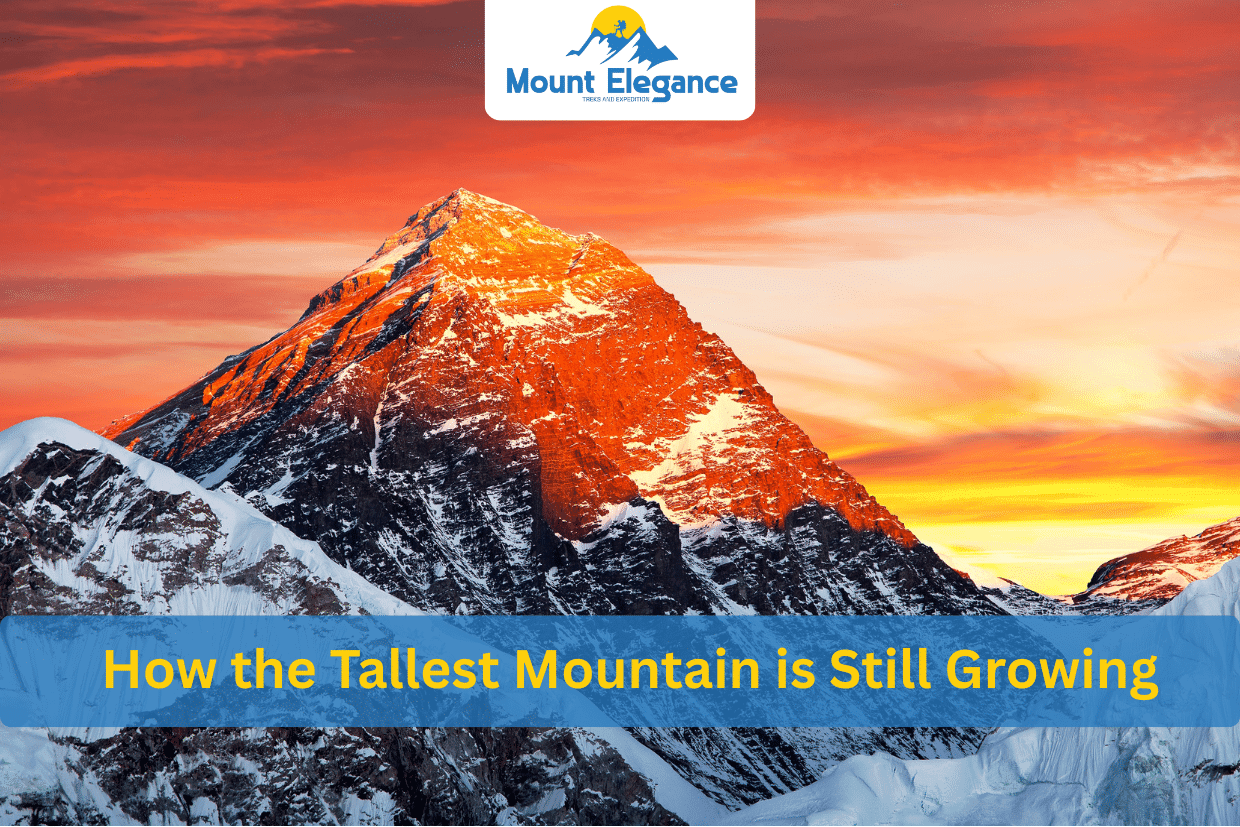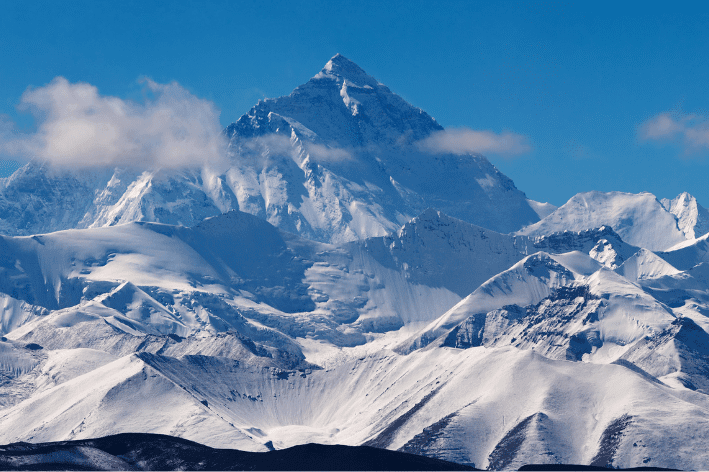Tallest Mountain Everest’s Moving Summit: How It’s Still Growing

Mount Everest stands at 8,848.86 meters tall. This makes it the tallest mountain on Earth. Yet, it grows about 4mm each year. Tectonic plates drive this change. The tallest mountain rises due to ongoing collisions. This fact draws scientists and adventurers alike. Firstly, understand the science. Then, plan your trek to the tallest mountain in the world.
Table of Contents
- The Geological Marvel Behind Everest’s Growth
- Everest’s Height Through the Ages
- Unique Aspects of the Tallest Mountain in the World
- Myths vs. Facts About the Tallest Mountain
- Planning Your Adventure to the Tallest Mountain
- Conclusion
The Geological Marvel Behind Everest’s Growth
The tallest mountain captivates us all. But how does it grow? Tectonic forces play a key role. The Indian plate pushes northward. It collides with the Eurasian plate. This action uplifts the Himalayas. Consequently, the everest mountain gains height. It rises about 4mm yearly. Besides, erosion counters some growth.
Plate Tectonics Explained
Earth’s crust consists of plates. They move slowly over time. In Nepal, this movement is dramatic. The collision began 50 million years ago. It continues today. As a result, the tallest mountain in the world gains height steadily. Scientists monitor this closely. Data comes from GPS stations.
Impact on Nepal’s Landscape
Nepal’s terrain transforms constantly. Rivers carve deep valleys. Glaciers shape peaks sharply. Moreover, earthquakes reshape the land. In 2015, a quake affected Everest. It lowered parts briefly. This resilience inspires trekkers everywhere. Meanwhile, other peaks like Annapurna rise too.
Everest’s Height Through the Ages
Everest’s height has intrigued explorers. In 1856, it measured 8,840 meters. Recent surveys show 8,848.86 meters. The tallest mountain evolves. Surveys use advanced technology. GPS and satellites provide accuracy. Furthermore, the tallest mountain in the world has grown 86cm since 1955.
Historical Measurements
Early climbers faced challenges. They used basic tools. However, accuracy improved over decades. In 1955, India confirmed its height. China and Nepal agreed in 2020. Thus, the tallest mountain’s official height updated. Learn more from the USGS.
Future Projections
What lies ahead for Everest? Growth may continue. Climate change affects glaciers. Erosion battles uplift. Nevertheless, the tallest mountain remains iconic. Experts predict slight increases yearly. This dynamic nature adds excitement. Trekking the tallest mountain reveals these changes firsthand.

Unique Aspects of the Tallest Mountain in the World
Beyond height, Everest offers wonders. Its ecosystem is diverse. Rare species thrive here. Additionally, cultural significance abounds. Sherpas share deep connections. The everest mountain in the world holds spiritual value. Besides, its snow-capped summit glows at dawn.
Biodiversity on Everest
Flora and fauna adapt to extremes. Snow leopards roam high altitudes. Himalayan tahr graze slopes. Birds soar above clouds. Furthermore, unique plants bloom briefly. This biodiversity enriches treks. Discover it on our Everest Base Camp Trek. See the tallest mountain up close.
Cultural and Spiritual Importance
Locals revere the tallest mountain. They call it Sagarmatha. It means “forehead in the sky.” Tibetan name is Chomolungma. Goddess of the world. Temples dot the paths. Rituals honor the peak. Experience this on our Gokyo Lake Trek. Moreover, festivals celebrate its majesty.
Adventurous Activities Around Everest
Trekking draws many visitors. Climbing challenges the brave. Helicopter tours offer views. Paragliding adds thrill. Moreover, cultural tours immerse you. The everest mountain provides endless options. Check our Annapurna Base Camp Trek for variety. Or try our Luxury Helicopter Tours.
Myths vs. Facts About the Tallest Mountain
Myths surround Everest often. Let’s debunk them. Firstly, is the everest shrinking? No, it grows despite erosion. Fact: Tectonic uplift wins currently.
- Myth: Everest is the highest point from sea level only. Fact: Mauna Kea is taller from base, but Everest is the tallest mountain above sea level.
- Myth: No life exists above 8,000m. Fact: Microbes and birds survive on the tallest mountain in the world.
- Myth: Growth stopped after quakes. Fact: It continues at 4mm/year, per National Geographic.
These facts make trekking the everest more intriguing. “Witnessing the tallest mountain up close changed my life—thanks to Mount Elegance Treks!” – Sarah, past client.
Planning Your Adventure to the Tallest Mountain
Dreaming of Everest? Preparation is essential. Choose the right season. Spring and autumn work best. Weather is stable then. Additionally, permits are required. Obtain them early. Consequently, avoid crowds on the everest.
Essential Tips for Trekkers
- Train for altitude: Hike 5-10km daily beforehand.
- Acclimatize slowly: Rest days prevent sickness.
- Pack warm clothing: Layers handle -20°C nights.
- Hydrate often: Drink 4-5 liters water daily.
- Hire experienced guides: Safety comes first on the tallest mountain in the world.
For details, visit the Nepal Tourism Board. Also, check Himalayan Database for records.
Sustainable Tourism Practices
Protect the tallest mountain. Follow leave-no-trace rules. Support local communities. Choose eco-friendly operators. Consequently, future generations enjoy it. Learn more from Nepal’s Ministry of Tourism. Offset carbon on your trek.
Conclusion
The tallest mountain continues to grow. It symbolizes human spirit. Everest invites exploration. Its changes remind us of nature’s power. Have you dreamed of the everest mountain? Comment below! Ready for your journey? Limited spots for 2024 Everest treks. Contact Mount Elegance Treks today. Book a personalized Nepal adventure. Get 10% off with code EVERESTGROW. Visit our contact page now. Let’s make memories together.
